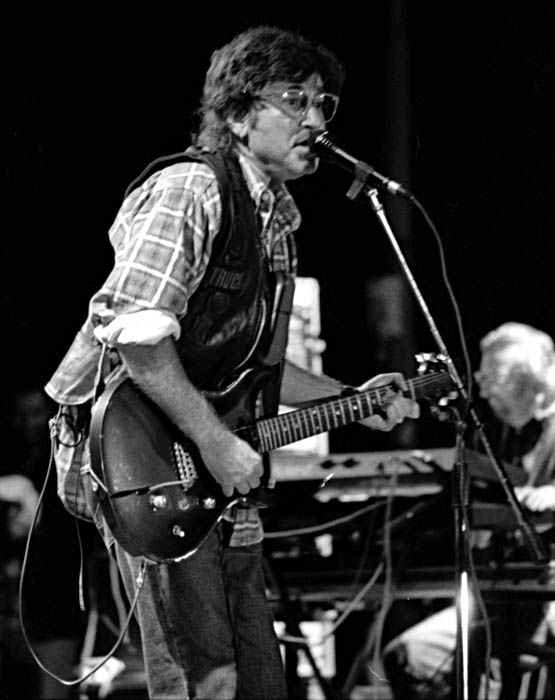
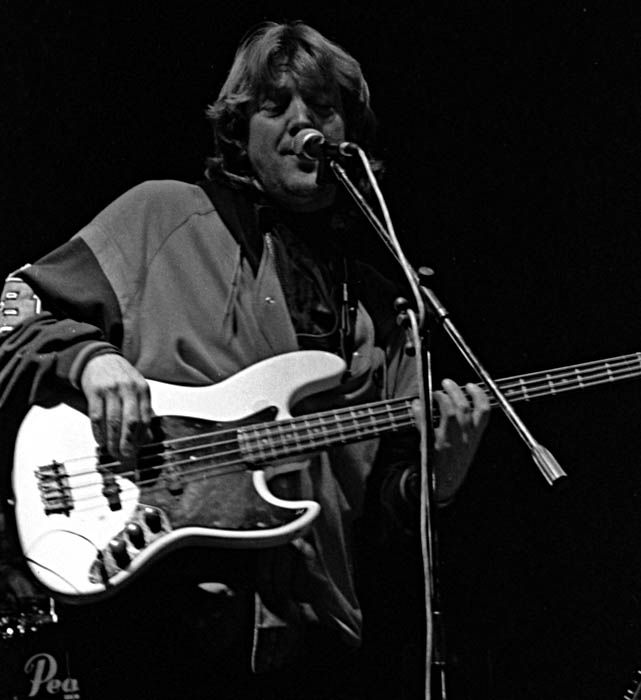
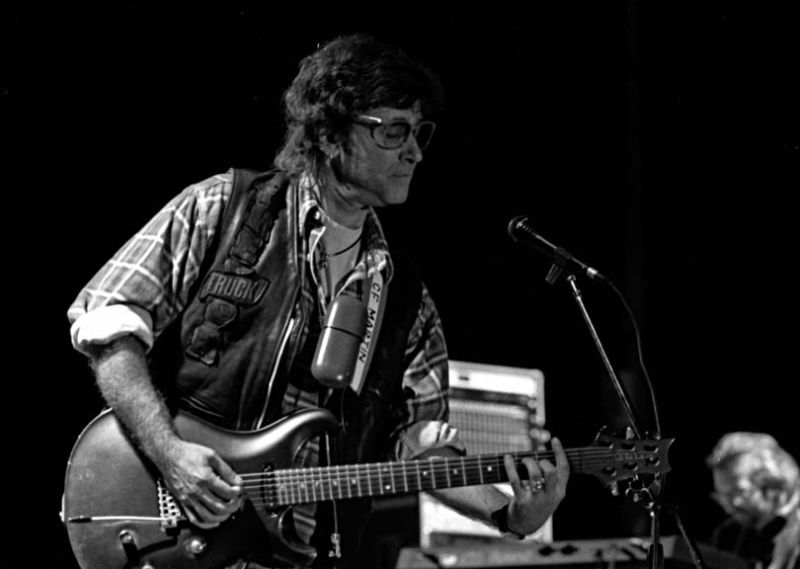
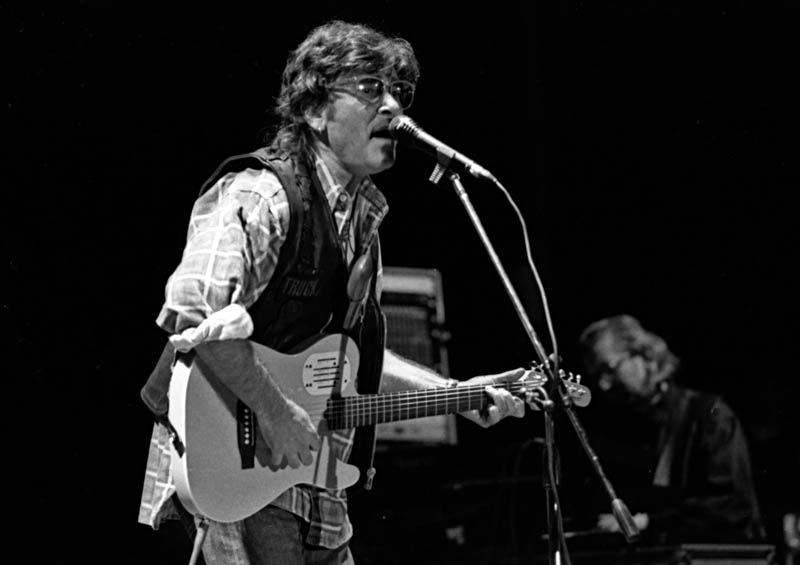
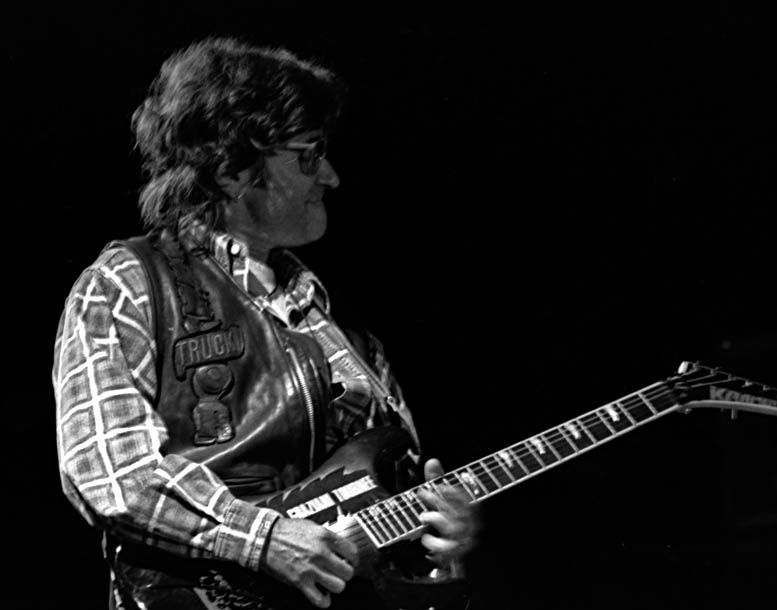
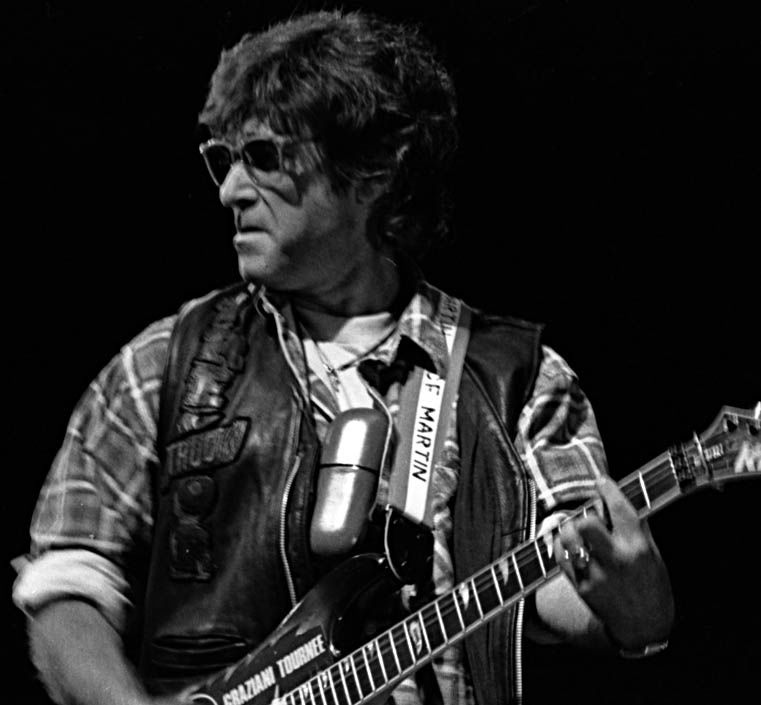
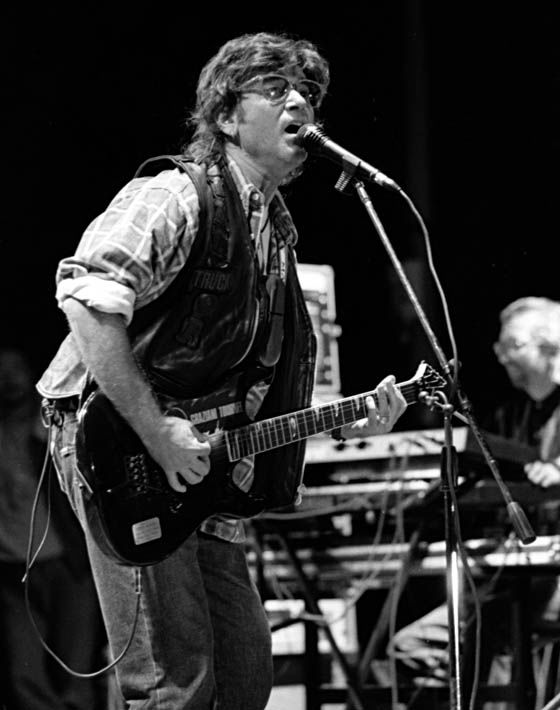
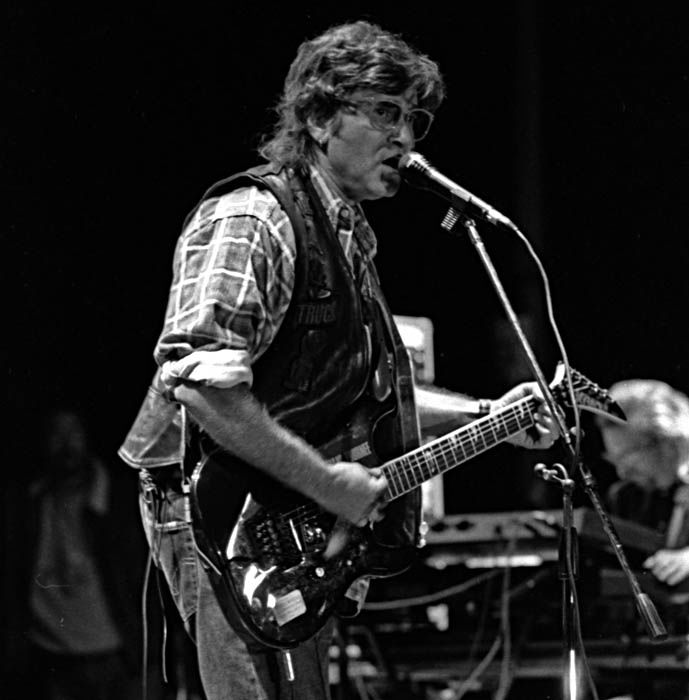
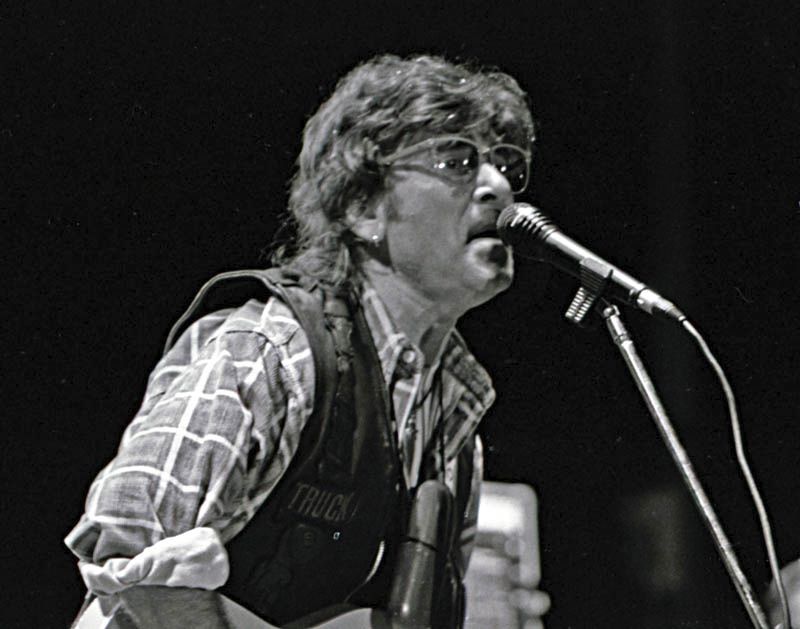
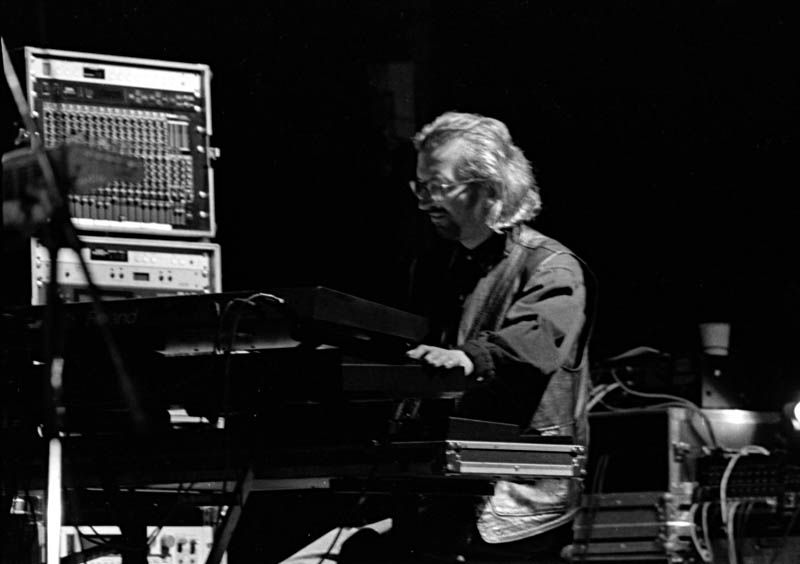
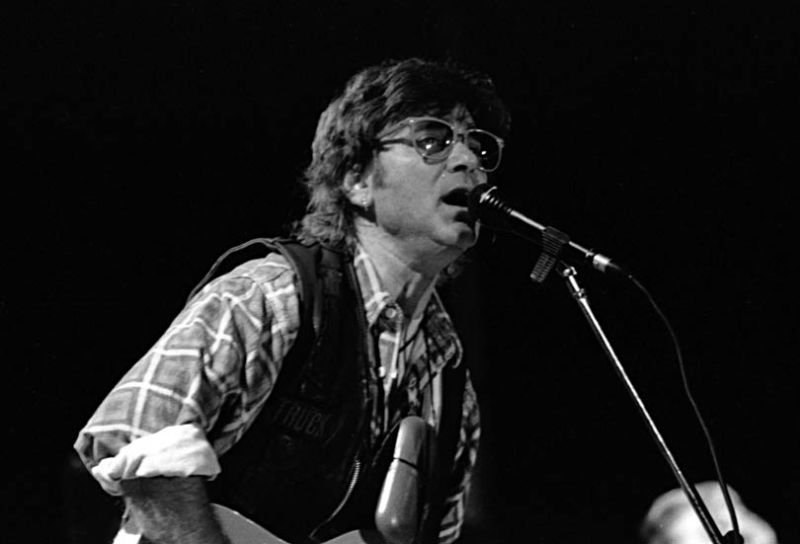
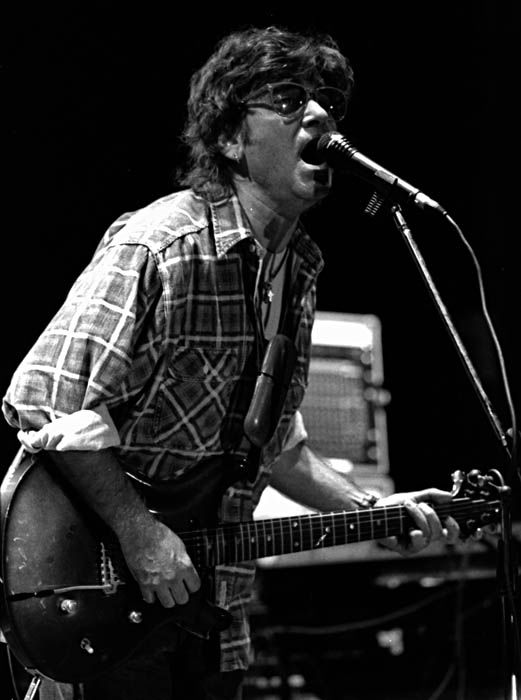
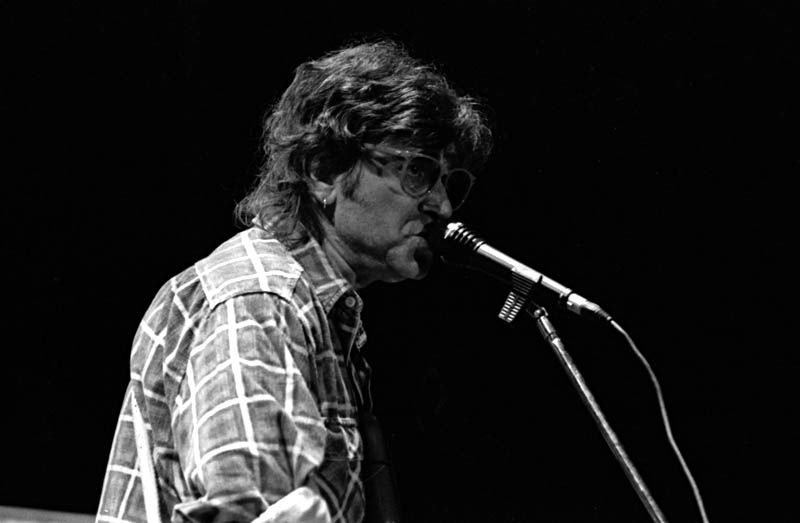
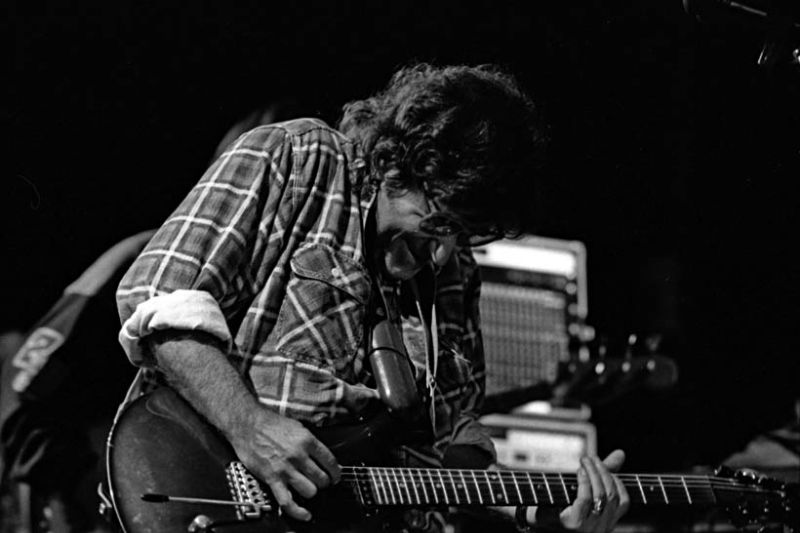
Ivan Graziani nasce il 6 ottobre del 1945 a Teramo. La musica lo appassiona fin da piccolo, e dopo un breve approccio con la batteria Ivan si innamora della chitarra, spinto dal senso di emulazione e di competizione che prova nei confronti del fratello maggiore. Il rocker Ivan dagli occhialoni rossi (ne aveva di ogni genere e colore) che si era inventato un gilet in pelle con i ganci per imbracciare la chitarra (una delle sue 200) . Alla fine degli anni 60' con il gruppo Anonima Sound, si trasferì a Milano. Il gruppo Anonima Sound attira l'attenzione dei discografici della Cbs è quasi l'inizio del 1968 ed il trio entra in sala d'incisione. È proprio con la b-side del primo 45 giri "Fuori Piove" che il gruppo compie un primo balzo verso le grandi platee: "Parla tu" (questo è il titolo), piace ai popolari conduttori Renzo Arbore e Gianni Boncompagni, e i passaggi radiofonici diventano importanti per l'iscrizione al Cantagiro. Per una band al debutto in una competizione a tappe garantisce molte più esibizioni e un'esposizione più duratura. Il brano, una beat ballad orchestrale che mette in luce l'inconfondibile timbro alto della voce di Ivan che non sconfina mai nel falsetto, si classifica all'ultimo posto, ma è l'abbrivio per la carriera professionista del gruppo. Seguono altri singoli: "L'amore mio, l'amore tuo" e "I tetti" di quello stesso anno, "Josephine" - scelta per l'edizione del 1969 del Cantagiro - e "Mille ragioni" e, sempre nel 1969, "Ombre vive" (coi testi a firma Mogol) e "Girotondo impossibile" che vedono una virata verso il nascente pop progressivo, grazie anche all'ingresso nella band del tastierista Roberto Carlotto, detto "Hunka Munka", che rivestirà una certa importanza nel prosieguo della storia. All'inizio degli anni 70' Ivan Graziani frequantò la zona Galleria del Corso, dove si trovavano le case discografiche come la Numero Uno, casa discografica per cui incidevano Lucio Battisti (con lui suono' "Ancora tu"), Bruno Lauzi, P.F.M., Antonello Venditti. Nel ’69 arriva l’ingaggio da parte della Numero Uno, ma dopo un nuovo singolo (“Ombre vive”/”Girotondo impossibile”). Decisamente più fruttuosa, in quel periodo per conto della Numero Uno, mette a buon frutto le sue eccellenti qualità di chitarrista. Ivan inizia a collaborare stabilmente con la Premiata Forneria Marconi, uno dei gruppi di punta dell’etichetta e partecipa alle registrazioni di “La batteria, il contrabbasso, ecc.” di Lucio Battisti, lo aiuta a riprendere l’attività in proprio. All'inizio degli anni 70 egli si ritrova spesso a bazzicare per Milano, dove consolida dei rapporti d'amicizia che sfociano in collaborazioni artistiche. Oltre all'ospitata nel disco dell'Anonima Sound Ltd, Ivan riveste un ruolo centrale nel disco di Roberto "Hunka Munka" Carlotto "Dedicato a Giovanna G." (1972) in cui, oltre a suonare il basso e a occuparsi di tutti gli arrangiamenti, firma gran parte delle musiche. Il disco BALLATA PER QUATTRO STAGIONI (1975), prodotto Claudio Pascoli; ma sono soprattutto la collaborazione con Antonello Venditti (Graziani suona la chitarra nell’album “Ullàlla” e nel tour successivo, aprendo i concerti del cantautore romano) e l’album I LUPI (1977) a imporlo finalmente all’attenzione del grande pubblico. La ballata “Lugano addio”, tratta da quel disco, entra in classifica e diventa il suo primo classico. Nel 1977 usci' "I lupi" e "Pigro", che furono gli album del successo, che fu massimo nel 1979 con "Agnese". Nel 1994, Graziani partecipa al Festival di Sanremo con “Maledette malelingue”: il brano si classifica al settimo posto riportando finalmente il suo nome ( e l’album seguente, MALELINGUE) all’attenzione del grande pubblico. Gli dà man forte anche Renato Zero, ammiratore di vecchia data, che duetta con lui in “La Nutella di tua sorella”, inedito incluso nel live FRAGILI FIORI-LIVAN che rimarrà purtroppo il suo testamento artistico: vittima di un tumore diagnosticatogli un paio di anni prima, Graziani si spegne il 1° gennaio del 1997 nella sua casa di Novafeltria (Pesaro).
Foto riprese nel 1990 - Foto camera Canon T90 - Ob . 135 mm f 2.8 e 50 mm f 1.4 - Film Kodak Tmax 400 esposta 800 Asa e sviluppata con KODAK T-MAX SVILUPPO (push processing 800 Asa).
Ivan Graziani was born October 6, 1945 in Teramo. The music fascinates him since childhood, and after a short approach with the battery Ivan fell in love of the guitar, driven by a sense of emulation and competition that evidence against the elder brother. The rocker Ivan the red goggles (he had all kinds of color) who had invented a leather vest with hooks to take up the guitar (one of his 200). At the end of the 60 'with the group Anonima Sound, moved to Milan. The group Anonima Sound attracts the attention of record company CBS is almost the beginning of 1968 and the trio enters the recording studio. It is with the b-side of the first 45 laps "It's raining outside" the group takes a first leap to the big audiences, "You speak" (this is the title), like the popular conductors Renzo Arbore and Gianni Boncompagni, and the steps radio become important for entry to the Cantagiro. For a band to debut in a contest by stages guarantees many more performances and an exhibition to the public more lasting. The song, a beat orchestral ballad that highlights the unmistakable stamp of the high voice of Ivan that does not encroach ever in falsetto, it ranks last place, but it is the momentum for the professional career of the group. Here are several more singles: "Love me, love your" and "roofs" of that same year, "Josephine" - chosen for the 1969 edition of the Cantagiro - and "A Thousand Reasons" and, again in 1969, "Shadows lives" (with the texts signed by Mogol) and "Wandering impossible" that they see a turn towards the rising pop progressive, thanks to the entry in the band's keyboardist Roberto Carlotto, said "Hunka Munka", which will play some importance in continuation of the story. In the early 70 'Ivan Graziani frequantò the Galleria del Corso, where there were record labels like Numero Uno, the record company which accounted for Lucio Battisti (with him sound' "You Again"), Toby Lightman, PFM, Antonello Venditti. In '69 came the engagement by the Number One, but after a new single ("Shadows live" / "Wandering impossible"). Definitely more fruitful, at that time on behalf of Number One, puts to good use his excellent qualities as a guitarist. Ivan began to work regularly with the PFM, one of the leading groups on the label and take part in the recording of "The drums, bass, etc.." By Lucio Battisti, helps him to resume his own business. At the beginning of the 70s he often finds himself hanging out to MilIn addition to the hard all'ospitata Anonima Sound Ltd, Ivan plays a central role in the disk of Roberto "Hunka Munka" Carlotto "Dedicated to Joan G." (1972) where, in addition to playing the bass, and take care of all the arrangements, signing most of the music. The album BALLAD FOR FOUR SEASONS (1975), produced Claudio Pascoli; but they are mainly working with Antonello Venditti (Graziani plays guitar on the album "Ullallà" and subsequent tour, opening for the Roman singer-songwriter) and the album WOLVES (1977) to finally impose the attention of the general public. The ballad "Lugano goodbye", taken from that album, entered the charts and became his first classic. In 1977 came out '"Wolves" and "Lazy," which was the album's success, which was highest in 1979 with "Agnes." In 1994, Graziani takes part in the Sanremo Festival with "Cursed gossips": the song is ranked seventh in finally bringing his name (and the next album, gossips) to the attention of the general public. It gives you a hand Renato Zero, an admirer of long standing, who duets with him on "The Nutella your sister," unpublished included in the live-DELICATE FLOWERS Livan that will unfortunately his artistic testament: a victim of cancer a couple of diagnosticatogli years earlier, Graziani goes off on January 1, 1997 at his home in Novafeltria (Pesaro).
Photos taken in 1971 - Photo camera Canon T90 - Ob. 135 mm - f 2.8 and 50 mm 1,4 - Film Kodak Tmax 400 exposed 800 Asa and developed with T-MAX (push processing 800 ASA).